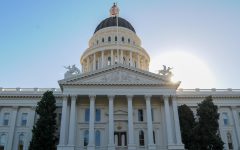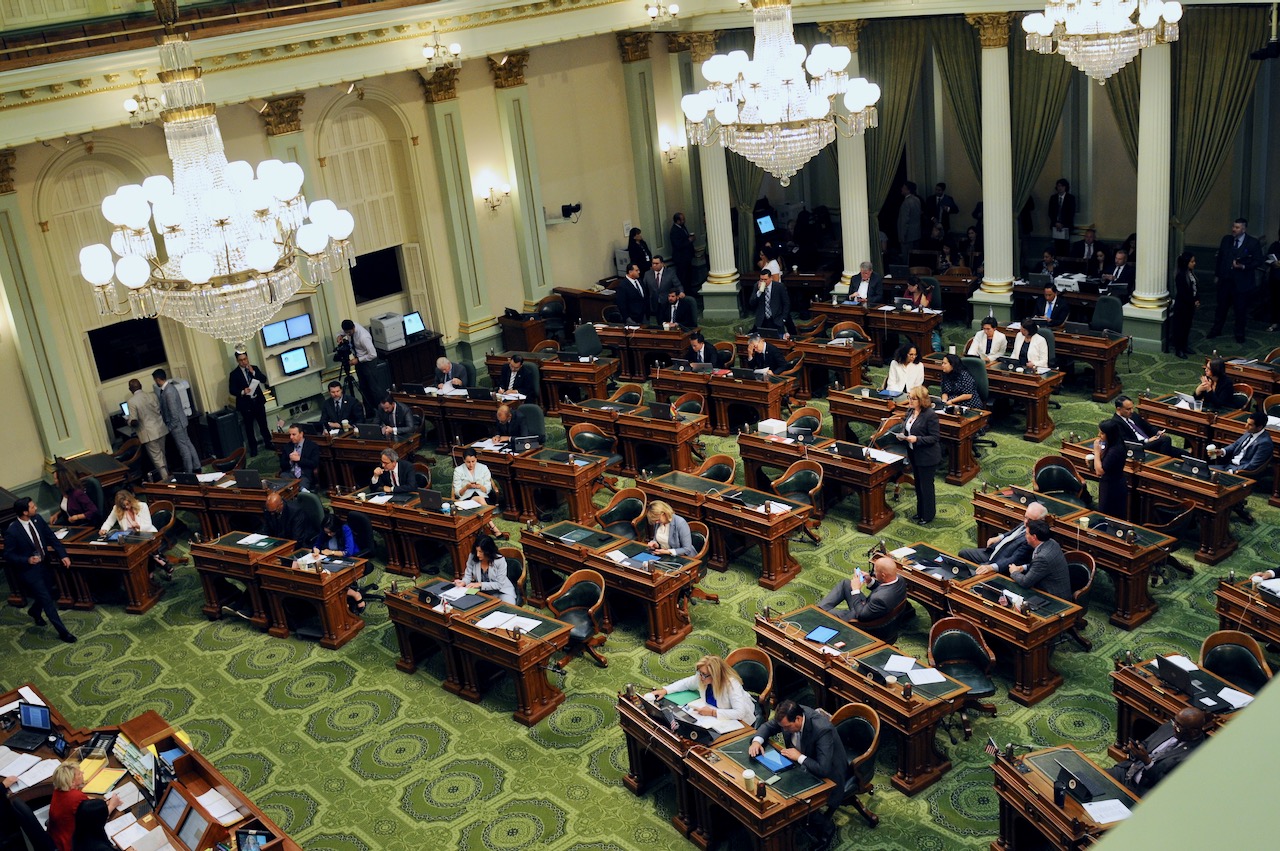
California State Capitol Dome. (Photo: Kevin Sanders for California Globe)
Unique Provisions of California’s Budget Bill – Part V
The California state budget is the largest in the nation
By Chris Micheli, October 26, 2022 3:45 pm
The California state budget is the largest in the nation, and it also represents the largest bill in page length and number of provisions. While its provisions are too many to cover, there are a number of them that are unique and readers should be aware of them. This article is the fifth in a series.
So, what are some of these unique provisions of California’s Budget Bill?
Reporting on IT Project Cost Increases
This section (Section 11) requires a report by the Department of Finance to the JLBC when the costs of an IT project increase by $5 million or 20% of the budgeted amount, and specifies what is to be included in the report. That report has to be made prior to any commitment to a new contract or contract amendment that is a result of the change or changes identified.
Software Licensing Agreements
This section (Section 11.10) deals with statewide software license agreements not previously approved by the Legislature that obligates state funds in the current year or future years. Before a department can enter into such a licensing agreement, the Director of Finance is required to notify the Legislature whether or not the obligation will result in a net expenditure or savings. In addition, a department is required to prepare and submit to the Department of Finance a business proposal containing specified elements.
This section also precludes a statewide software license agreement from being entered into or amended unless the approval of the Director of Finance is first obtained and written notification of that approval is provided by the department to the Chairperson of the Joint Legislative Budget Committee. That notification must include specified information.
Privacy Requirements
This section requires protection of state employees’ privacy related to payments made to employees. The following is an example of this provision in the state budget bill:
SEC. 11.11.
To protect the privacy of state employees and ensure the security of the payment of public funds, all departments, boards, offices, and other agencies and entities of the state shall distribute pay warrants and direct deposit advices to employees in a manner that ensures that personal and confidential information contained on the warrants and direct deposit advices is protected from unauthorized access. The Department of Human Resources shall advise all departments, boards, offices, and other agencies and entities of state government of the requirements contained in this section.
Capital Outlay Projects and Federal Funds
This section expresses the intent of the Legislature regarding federal funds for capital outlay projects and their interaction with the State Appropriations Limit (SAL), often referred to as the “Gann Limit,” which limits the total expenditures by state government based upon population and cost of living adjustments. The following is an example of this language from the state budget bill:
SEC. 11.97.
It is the intent of the Legislature that federal fund appropriations for capital outlay projects that may be excluded from the state appropriations limit, as provided in Article XIII B of the California Constitution, be funded with General Fund resources to the maximum extent possible in fiscal year 2022‒23. The Department of Finance shall determine if any appropriation of federal funds meets the definition of qualified capital outlay projects pursuant to Section 7914 of the Government Code. If the Department of Finance determines that a capital outlay federal fund appropriation qualifies, except for federal funds specifically allocated for capital outlay projects, the Director of Finance may replace the identified appropriation with eligible noncapital outlay expenditures appropriated from the General Fund, but only to the extent necessary to remain below the state appropriations limit for the 2022‒23 fiscal year.
State Appropriations Limit
This section establishes the amount of the SAL, or Gann Limit, for the state’s fiscal year. There is also a provision that limits any judicial action challenging the SAL, that such an action must occur within 45 days of the state budget being enacted. The following is an example of this language from the most recent state budget bill:
SEC. 12.00.
For the purposes of Article XIII B of the California Constitution, there is hereby established a state “appropriations limit” of $135,663,000,000 for the 2022–23 fiscal year.
Any judicial action or proceeding to attack, review, set aside, void, or annul the “appropriations limit” for the 2022–23 fiscal year shall be commenced within 45 days of the effective date of this act.
Prop. 98 Spending Amounts
Adopted by the statewide electorate, Prop. 98 guarantees a percentage of the California budget to funding K-14 education. This section also establishes the amount of Prop. 98 funding for the fiscal year. The following is an example of this language from the most recent state budget bill:
SEC. 12.32.
(a) It is the intent of the Legislature that appropriations that are subject to Section 8 of Article XVI of the California Constitution be designated with the wording “Proposition 98.” In the event these appropriations are not so designated, they may be designated as such by the Department of Finance, where that designation is consistent with legislative intent, not less than 30 days after notification in writing of the proposed designation to the chairpersons of the committees in each house of the Legislature that consider appropriations and the Chairperson of the Joint Legislative Budget Committee, or not less than a shorter period after notification that the chairperson of the joint committee, or the chairperson’s designee, determines.
(b) Pursuant to the Proposition 98 funding requirements established in Chapter 2 (commencing with Section 41200) of Part 24 of Division 3 of Title 2 of the Education Code, the total appropriations for Proposition 98 for the 2022–23 fiscal year are $82,282,441,000, or 38.3 percent of total General Fund revenues, Education Protection Account revenues, and transfers subject to the state appropriations limit. General Fund and Education Protection Account revenues appropriated for school districts are $71,021,862,000, or 33.1 percent of total General Fund revenues, Education Protection Account revenues, and transfers subject to the state appropriations limit. General Fund and Education Protection Account revenues appropriated to school districts and community college districts for adult education and K–12 Career Technical Education Strong Workforce Program are $896,637,000, or 0.4 percent of total General Fund revenues, Education Protection Account revenues, and transfers subject to the state appropriations limit. General Fund and Education Protection Account revenues appropriated for community college districts are $8,054,371,000, or 3.7 percent of total General Fund revenues, Education Protection Account revenues, and transfers subject to the state appropriations limit. General Fund and Education Protection Account revenues appropriated for other state agencies that provide direct elementary and secondary level education, as defined in Section 41302.5 of the Education Code, are $93,915,000, or 0.1 percent of total General Fund revenues, Education Protection Account revenues, and transfers subject to the state appropriations limit. General Fund and Education Protection Account revenues transferred to the Public School System Stabilization Account are $2,225,656,000, or 1.0, percent of total General Fund revenues, Education Protection Account revenues, and transfers subject to the state appropriations limit.
DCA Special Funds
The Department of Consumer Affairs oversees the work of more than two dozen boards, commissions, and bureaus that license and regulate different professions and occupations. This section (Section 14) grants authority to the Director of the DCA to transfer moneys if there is an insufficient amount of monies in a special fund through the use of a loan from another special fund under the DCA, so long as four conditions are met. The following is an example of this language from the most recent state budget bill:
SEC. 14.00.
(a) Notwithstanding any other law, if the Director of Consumer Affairs determines in writing that there is insufficient cash in a special fund under the authority of a board, commission, or bureau of the Department of Consumer Affairs to make one or more payments currently due and payable, the director may order the transfer of moneys to that special fund, in the amount necessary to make the payment or payments, as a loan from a special fund under the authority of another board, commission, or bureau of the department. That loan shall be subject to all of the following conditions:
(1) No loan from a special fund shall be made that would interfere with the carrying out of the purpose for which the special fund was created.
(2) The loan shall be repaid as soon as there are sufficient moneys in the recipient fund to repay the amount loaned, but no later than a date 24 months after the date of the loan. Interest on the loan shall be paid from the recipient fund at the rate accruing during the loan period to moneys in the Pooled Money Investment Account.
(3) The amount loaned shall not exceed the amount that the appropriate board, commission, or bureau is statutorily authorized at the time of the loan to expend during the 2022–23 fiscal year from the recipient fund.
(4) The terms and conditions of the loan are approved, prior to the transfer of funds, by the Department of Finance pursuant to appropriate fiscal standards.
- Quiet Title Civil Actions - December 11, 2025
- Education and Certification of Vessel Operators - December 11, 2025
- ID Cards and Emancipated Minors - December 10, 2025




One thought on “Unique Provisions of California’s Budget Bill – Part V”